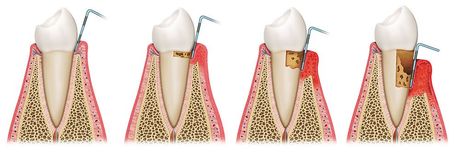MEET US
We're dedicated to providing you with exceptional care.
MEET
Madeline Buyers, DDS
Dr. Buyers is a Board Certified Periodontist and Implant Surgeon with expertise in esthetic and functional reconstructive surgery, along with periodontal plastic surgery, periodontal regenerative surgery, and non-surgical periodontal treatment.
About Periodontics
What is a periodontist?
A periodontist is a dentist who specializes in the prevention, diagnosis, and treatment of periodontal disease, and in the placement of dental implants. Periodontists are also experts in the treatment of oral inflammation. Periodontists receive extensive training in these areas, including three additional years of education beyond dental school. They are familiar with the latest techniques for diagnosing and treating periodontal disease, and are also trained in performing cosmetic periodontal procedures. In addition, periodontists are specially trained in the placement, maintenance, and repair of dental implants.
During the first visit, the periodontist usually reviews the patient’s complete medical and dental histories. It is extremely important for the periodontist to know if any
medications are being taken or if the patient is being treated for any condition that can affect periodontal care, such as heart disease, diabetes, or pregnancy.
The periodontist examines the gums, checks to see if there is any gum line recession, assesses how the teeth fit together when biting, and checks the teeth to see if any are loose. The periodontist will also take a small measuring instrument called a probe and place it between the teeth and gums to determine the depth of those spaces, known as periodontal pockets; this helps the periodontist assess the health of the gums. X-rays may also be taken to observe the health of the bone below the gum line.
What is Periodontal/Gum Disease?
Progression of periodontal disease. Pockets form and deepen if plaque/tartar is not removed.
It is astounding that HALF of American adults aged 30+ have periodontal disease, according to the CDC. In adults 65 and older, prevalence rates increase to 70%.
Periodontal disease is a chronic inflammatory disease that affects the gum tissue and bone supporting the teeth (the periodontium). Periodontal disease destroys supporting tissue and bone, forming pockets or spaces around the teeth. Over time pockets – or spaces between the tooth and the gum tissue – deepen, allowing the plaque or bacteria to grow, and destroying bone support. This process ultimately causes tooth loss. It is essential that the pocket depths are in a healthy range so you get to keep your teeth as long as possible.
Periodontal Disease is caused mainly by plaque, which is bacteria. To lower the risk of developing both cavities and periodontal disease, it is important to remove this bacteria with daily brushing and interdental cleaning (e.g. flossing). Nonetheless, periodontal disease can develop even in patients who have impeccable oral hygiene, as genetics, nicotine, stress, various medications, and poor diet play a role in irreversible damage of the foundation around the teeth.
Research has also shown that periodontal disease is associated with other chronic inflammatory diseases, such as diabetes and cardiovascular disease. Bacteria from periodontal disease can travel through the bloodstream and affect other areas of the body. There is a strong mouth-body connection! Many serious medical conditions are exacerbated from lack of attention given to your gums.
We believe that saving and maintaining your natural teeth is the best goal. With proper care and education, periodontal treatment is very successful in saving teeth. While implants are good solutions when teeth can’t be saved, they are no substitute for your own teeth.
Pain is not a sign of this disease! The main signs of periodontal disease are bleeding gums, swollen and/or reddish gums, loose teeth, changes in the position of the teeth, bad breath or even tooth loss.
We're state-of-the-art and conveniently located.
Our office staff, dental assistants and hygienists are experienced and help provide a friendly and comfortable environment for patients. We also have the convenience of a dental laboratory on the premises, which enhances our ability to provide customized services.
We are conveniently located off the Milestrip Rd East exit from Rte 219 in Orchard Park, NY, a short 20 minutes south of Buffalo.
New patient consultations are by appointment only.


